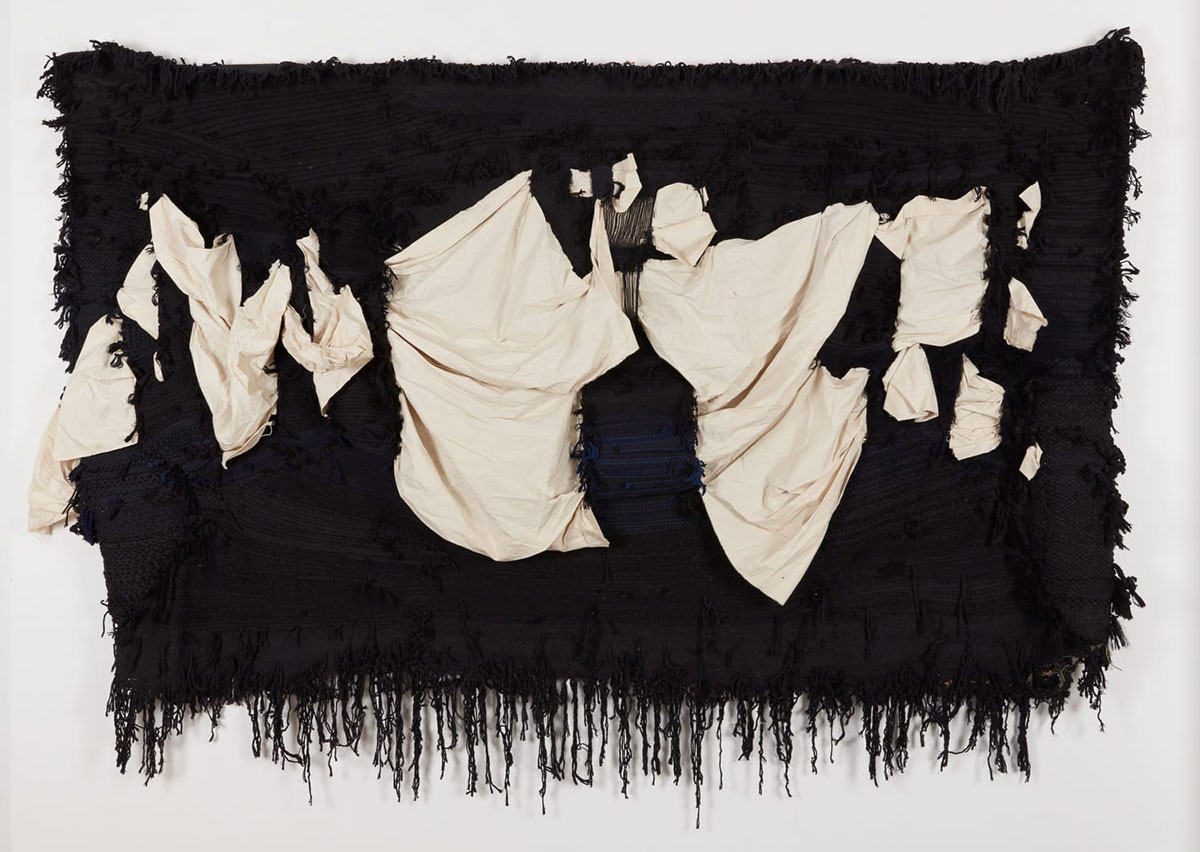ART CITIES: Paris-Josep Grau Garriga
 A major figure in the contemporary textile-art movement, Josep Grau-Garriga often created awe-inspiring tapestries that he presented in direct dialogue with architectural sites such as churches and forecourts. In the 1970s and 1980s, having become veritable textile sculptures, Josep Grau-Garriga’s tapestries attracted the attention of Philippe de Montebello, the young American curator and future director of the Metropolitan Museum of New York, who proposed to present Grau-Garriga’s first big retrospective at the Houston Fine Arts Museum (Texas) in 1970.
A major figure in the contemporary textile-art movement, Josep Grau-Garriga often created awe-inspiring tapestries that he presented in direct dialogue with architectural sites such as churches and forecourts. In the 1970s and 1980s, having become veritable textile sculptures, Josep Grau-Garriga’s tapestries attracted the attention of Philippe de Montebello, the young American curator and future director of the Metropolitan Museum of New York, who proposed to present Grau-Garriga’s first big retrospective at the Houston Fine Arts Museum (Texas) in 1970.
By Efi Michalarou
Photo: Galerie Nathalie Obadia
A classical training in painting can, paradoxically, allow the artist to achieve an utter liberty: Pablo Picasso is the most eloquent example of this kind. Josep Grau-Garriga, born in 1929 in Sant Cugat del Vallès near Barcelona, began by learning drawing at the San Jordi School of Fine Arts; he painted his first frescoes at the Hermitage of San Crist de Lleceres, in the tradition of Catalan medieval mural art. The artist gradually shifted towards heterodoxy, adopting an experimental and daring practice, thereby leaving a powerful legacy: his great mastery of the art of tapestry and painting has given his creations a high degree of freedom, both in the form used and the content expressed. Matter becomes an expressive force. Superpositions and insertions of materials enhance everyday objects, giving rise to unique textural impressions and reliefs all becoming progressively part of his creative resources over the years. The exhibition “L’expérience imagine” shows this creative effervescence by bringing together a heterogeneous body of works, all dated between 1972 and 2009. Tapestries, works on paper and a video share the exhibition space: they highlight the artistic evolution of this virtuoso of contemporary tapestry, from early examples burdened by Spain’s historical upheavals to serene and timeless tapestries of the 2000s. The exhibition shows the artist’s ability to imagine new plastic combinations, whose readings – sometimes clear and sometimes indirect – reflect personal and collective experiences. The exhibition plunges the visitor into the heart of a continuously expanding thought, nurtured by a raw sensibility. He cultivated this acute sensitivity early on, growing up in a rural environment, in contact with nature. He observed the immensity of the landscape, its redrawing by the work of the laborer, the plough digging the earth. The geometry of the furrows, the textures and smells emanating from the soil awakened his sensitivity. This deep attachment to pungent, tactile nature, to objects and to society, constitutes the foundations of the subjects that will inspire him throughout his life. In the 1950s, Grau-Garriga began to practice the art of tapestry, setting up experimental textile workshops in his hometown. Meanwhile, his various journeys raised his awareness of the world’s artistic movements – the Art informel of Fautrier, Dubuffet and Burri in France or Pop and Conceptual Art in the United States. These geographical journeys also confronted him with the different political and cultural contexts of each country. From the 1970s to the end of 1980s Grau Garriga elaborated a body of work opposed to the aesthetics of the time and punctuated by social denunciations and strong political messages. From Francoism in Spain to May 1968 in France, from international conflicts to the workers’ struggle, everything seemed to affect the artist’s sensibility. The bags and strings that are intertwined in his works are symbolic elements, soaking up the sweat and blood of humanity. The most significant parable in the exhibition is the flag with the colors of Catalonia, “Com bandera” (1974). This charged motif symbolizes the Catalan national identity, disfigured by the violence of the dictatorship. By seeking free expression in his artistic practice, Grau-Garriga attempts to restore the lost freedom of the people of his country. The exhibition, thus reveals the artist’s ability to imagine new artistic horizons, to overcome established frameworks, rules and conventions. The viewer’s imagination is stimulated by these abstract compositions made of unidentified objects. The assigned titles provide multiple possibilities of imagination, vaguely figurative interpretations: a date, “Agost 86”, could embody a key event; “Rastre de naufragi” can evoke a painful experience and “Mals lligams” links that intertwine into knots. Within one and the same work, porosities between the real and the fictional world are established, inspired by both the common history and the intimate history of the artist. For the underlying principle of the exhibition seems to trace the path of Josep Grau-Garriga’s life: the visitor wanders through works of the 1970s marked by the Spanish Civil War, to the quiet of the 2000s, when the artist moved to the French countryside. Although wool or hemp fibers, copper wire and plastic cord retain their substantial thickness, the artist’s latest creations seek to unify skills and materials. They reflect a harmony that he found in his workshop in Anjou, with its luminous and serene atmosphere, the years that marked the end of his life.
Photo: Josep Grau-Garriga, Drap vermell, 1993, Wool, cotton, 180 x 250 cm, © Josep Grau-Garriga, Courtesy the artist and Galerie Nathalie Obadia
Info: Galerie Nathalie Obadia, 3 rue du Cloître Saint-Merri, Paris, France, Duration: 24/2-24/4/2023, Days & Hours: Mot-Sat 11:00-19:00, www.nathalieobadia.com


Right: Josep Grau-Garriga, Com pell 2, 2005, Cotton, wool, clothes, 200 x 95 cm, © Josep Grau-Garriga, Courtesy the artist and Galerie Nathalie Obadia


Right: Josep Grau-Garriga, Sense títol (Sans titre), 1994, Indian ink, gouache, spray paint and cardboard mounted on paper, 42,5 x 31,2 cm, © Josep Grau-Garriga, Courtesy the artist and Galerie Nathalie Obadia

